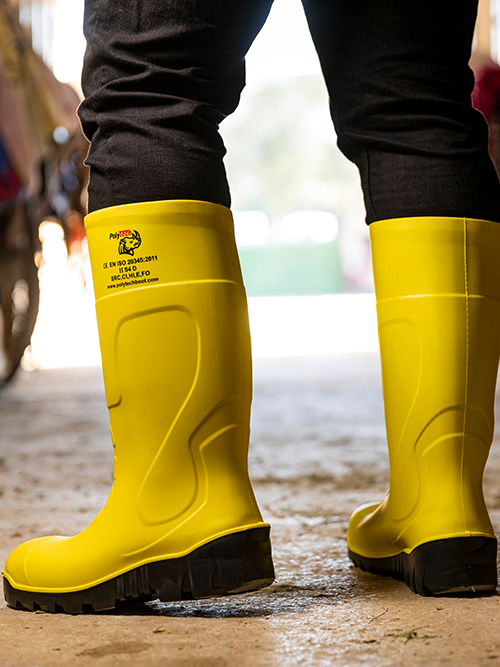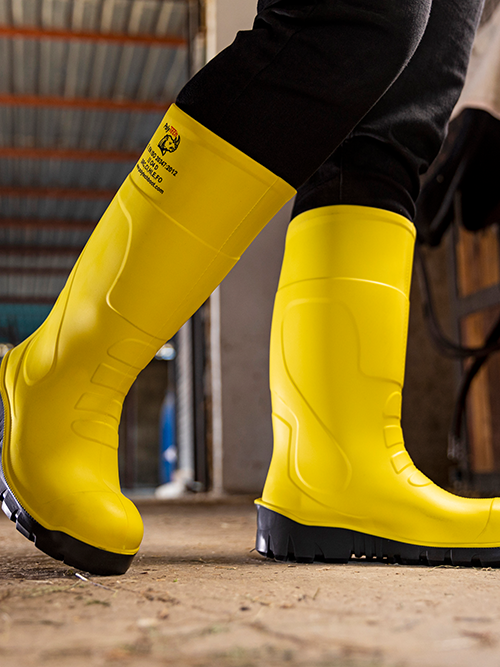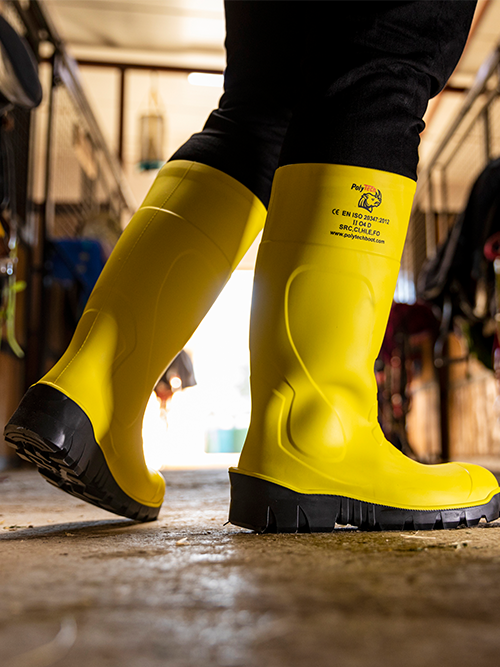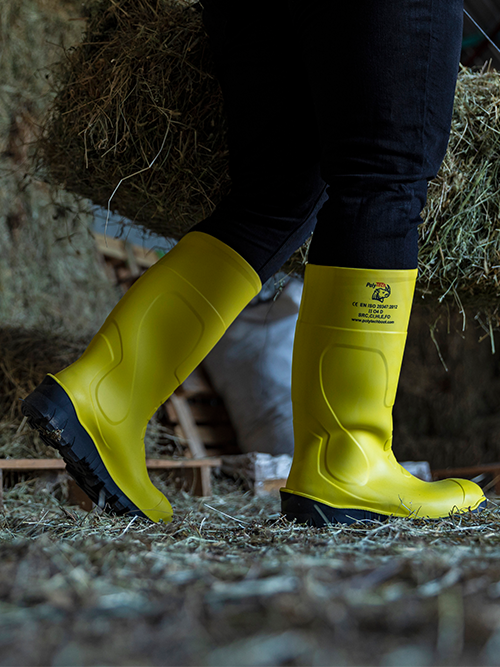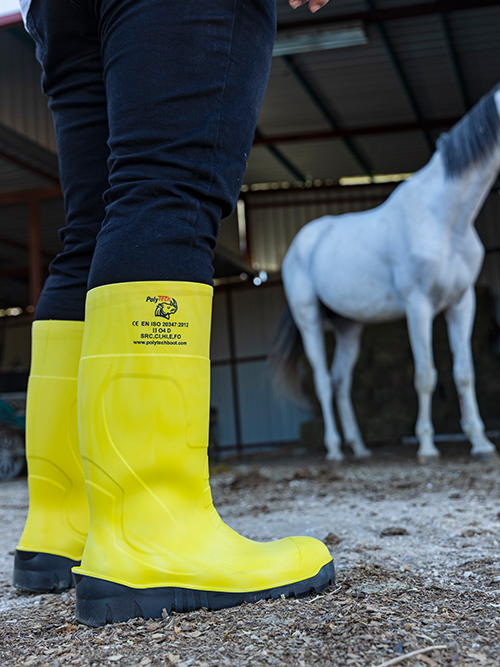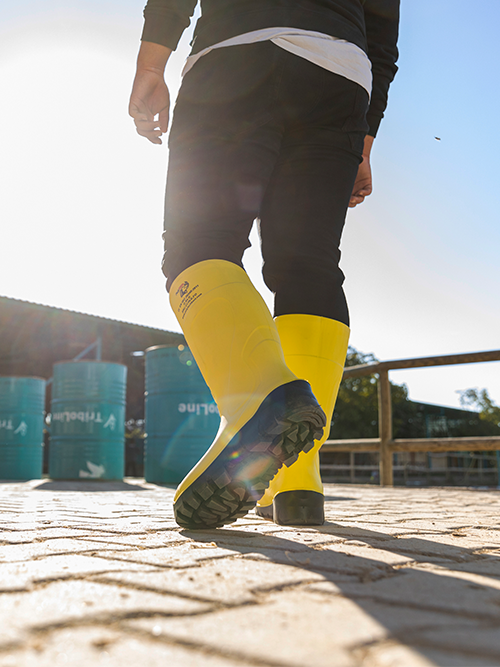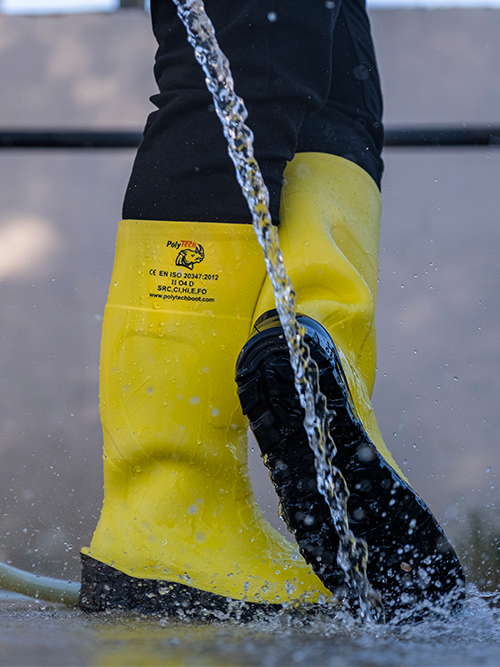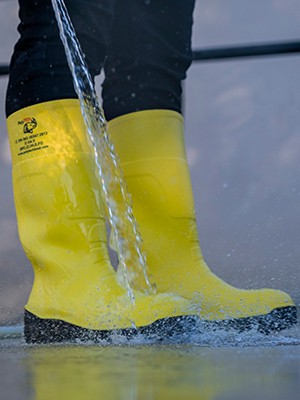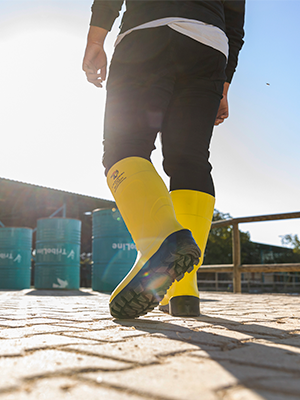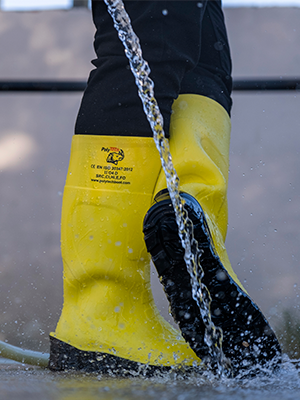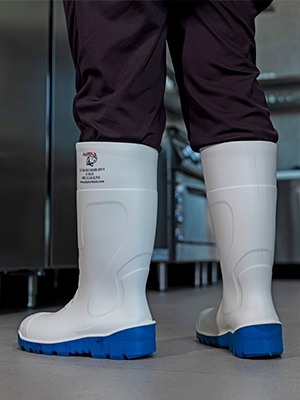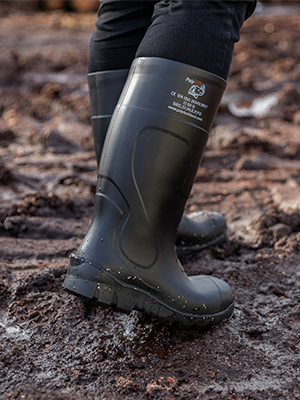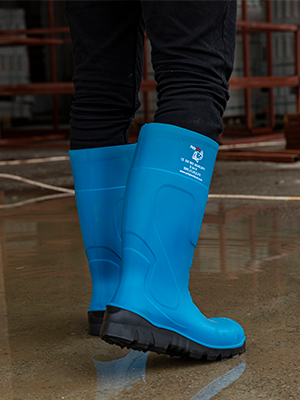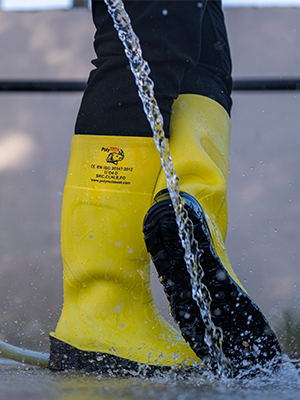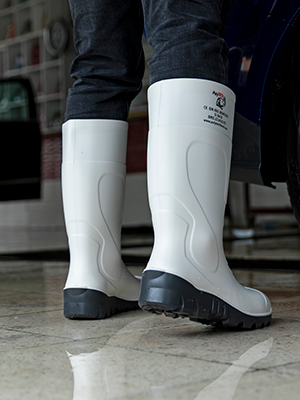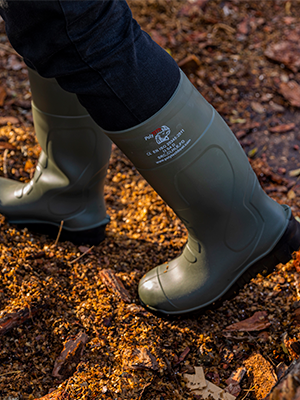PolyTech YB - O4
PolyTech YB - O4
Polyurethane (PU) material provides energy saving, lightness and comfort, boots made of PU tend to be longer lasting and fit for purpose.
PolyTech Boots is manufactured in accordance with EU Directive 2016/425. O4 and O5 class boots meet the requirements of the Occupational Footwear EN ISO 20347 Standard. S4 and S5 class boots meet the requirements of the Safety Footwear EN ISO 20345 Standard. PolyTech Boots Boots are manufactured in Category II Class and in accordance with D Design. No breakage or cracking up to -40°C. Under the foot number, there is the date of manufacture as month and year. Produced with "BASF-The Chemical Company" Polyurethane Raw Material.
| Safety Boot Features | |||||
Comfort  |
Oil Resistant Outsole  |
Energy Absorbing  |
Heat Resistant  |
Cold Resistant  |
Water Proof  |
Chemical Resistant  |
Ankle Protection  |
Slip Resistance Outsole  |
Anti-Static Material  |
||
| O4 | O5 | S4 | S5 | ||
| Boot Weights ( + / - ) Foot No: 42 | 1,70 kg/Pair | 1,83 kg/Pair | 1,88 kg/Pair | 2,00 kg/Pair | |
| Relevant Standard | EN ISO 20347 | ||||
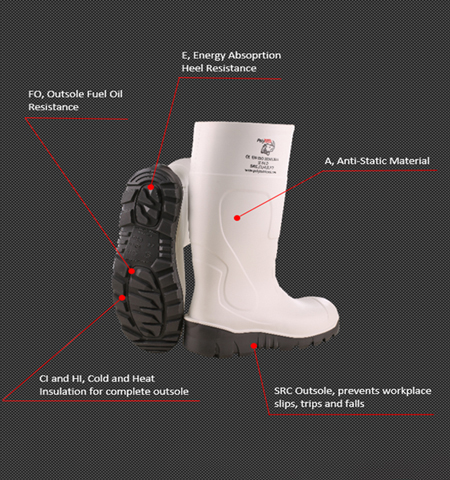 |
Boot Outer Surface | Low Density Polyurethane |
| A, Anti-Static Material | ||
| Boot Sole | High Density Polyurethane | |
| FO, Outsole Fuel Oil Resistance | ||
| CI, Cold Insulation | ||
| HI, Heat Insulation | ||
| SRC, SRA+SRB, Resistance to Slip | ||
Insoles  |
Removable, Anti-Bacterial, Orthopedic Footbed | |
| Preferred Area of Use | Agriculture and Livestock Facilities | |
| Heat and Electricity | Resistant to -40°C / 22.000 V | |
| Certificates |
Standards
- Our boots are produced in accordance with EU directive 2016/425.
- (https://eur-lex.europa.eu/legal-content/EN/TXT/PDF/?uri=CELEX:32016R0425&rid=4)
- Work Footwear TS EN ISO 20347 standard requirements for our O4 and O5 class boots
- Safety Footwear for our S4 and S5 class boots meets the requirements of the TS EN ISO 20345 standard.
- Our boots are produced in Category II class and in accordance with D Design.
Symbols and Meanings
Boot Features
You can use our boots made of polyurethane material easily in all seasons due to their superior thermal insulation properties. Boot types and the protective materials they contain are shown in the table below.
- Since O5 boots contain steel sole protector, they provide protection to the sole against materials such as nails and glass that can puncture the sole.
- Safety Footwear S4 boots provide protection by preventing impacts to the toe, as they contain a steel protector on the toe. The Steel Toe provides protection against a 200 Joules equivalent impact from a 20 kg object dropped from a height of 1 meter. It may not protect against an impact greater than 200 Joules.
- Safety Footwear S5 boots provide both of the above-mentioned protections as they contain both a steel sole and a steel toe cap.
- Work Footwear must meet the requirements of the provisions of the EN ISO 20345 standard. (SB, S4, S5)
- Safety Footwear must meet the requirements of the provisions in the EN ISO 20347 standard. (OB, O4, O5)
- Fracture or Cracking is not visible down to -40°C.
- Manufacture date as month and year, under the foot number drawing.
- Our boots have SRC slip resistance.
- SRA: Slip resistance on ceramic floor with Sodium Larul Sulphate solution
- SRB: Slip resistance on glycerin substrate
- SRC: Boot that passes both SRA and SRB tests.(SRA + SRB)
- The boots have antistatic properties.
| Steel Midsole | Steel Toe Cap | |
| O4 | - | - |
| O5 | + | - |
| S4 | - | + |
| S5 | + | + |
Antistatic footwear should be used when it is necessary to minimize the electrostatic build-up through the propagation of electrostatic charges so that, for example, it is possible to avoid the risk of ignition of flammable substances and vapors by sparks and the risk of shock from any electrical apparatus or live parts cannot be completely eliminated. However, it should be noted that anti-static footwear cannot guarantee adequate protection against electric shock simply because it provides resistance between the foot and the ground. If the risk of electric shock has not been completely eliminated, additional measures are necessary to avoid this risk. Such measures, as well as the additional testing mentioned below, should be a routine part of the workplace accident prevention program.
Boots are antistatic if the measured contact resistance is in the range of 100 KiloOhm (10⁵ohm) to 1 GigaOhm (10⁹ohm). According to the standard, if the contact resistance falls below this value, they are conductive, a higher value means they are electrically insulating. The electrical resistance of antistatic products varies considerably under bending, smearing, humidity and pollution conditions. Boots used in wet conditions cannot provide their electrical functions. The user must take additional precautions/protections to protect himself. Before entering the dangerous area, the electrical resistance of the boot should be retested at regular and frequent intervals due to the risk of contamination and dirt on the sole of the boot.
Important Notice
- Antistatic Footwear does not guarantee equivalent protection against electric shock simply because it provides resistance between the floor and the foot.
- The Footwear Tests were made without Fuspet sole. If the fuspet is placed, it may affect the protective properties of the footwear.
- Under the terms of the User's Manual, the life of this harness is 1 year.
Boot Usage, Maintenance and Storage Conditions
Any kind of residue (dirt, mud, fertilizer, chemical, etc.) that may occur on your boots after using them with water, soap and a clean cloth or brush. should be cleaned. Chemical cleaners should not be used. After the boot is used in every busy working environment, it must be cleaned. The boots should not be exposed to heat that can be found in the working or storage environment. It should be stored in a dry and cool place away from moisture and sun.
Polytech Boot Multi-Layer Comfort and Safety Measures
Polytech Boots are purpose-built, long-lasting, light and comfortable boots made of polyurethane material. The produced boots are based on comfort and durability. Oil and slip resistant outer sole, energy absorbing and anti-static prevents work accidents and minimum accidents. Being resistant to chemicals, waterproof and resistant to heat and cold, it protects your feet from external factors.
 Comfort
Comfort
 Oil Resistant Outsole
Oil Resistant Outsole
 Energy Absorber
Energy Absorber
 Heat Resistant
Heat Resistant
 Cold Resistant
Cold Resistant
 Waterproof
Waterproof
 Chemical Resistant
Chemical Resistant
 Ankle Protection
Ankle Protection
 Slip Resistant Outsole
Slip Resistant Outsole
 Antistatic
Antistatic

